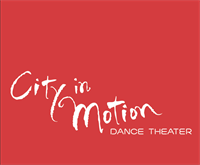
Nonprofit News
Stay updated on the latest news in Kansas City's nonprofit community.
Does your organization have good news to share? Nonprofit Connect is pleased to share news from our members on our website. Post your recent hiring announcements, fundraising achievements, honors and awards, or other good news. Log in to post your news.
Please post event announcements on our free Community Events Calendar.
The Best Summer Night Of A City In Motion
September means many things in Kansas City—kids going back to school, a break from the August heat, and scads of art festivals celebrating local creatives. For City in Motion, September is all about our annual Dance in the Park. The show will take place this year on Sept. 7 in Roanoke Park at 7:00, with a special warm-up fair beginning at 5:30, Youth Demonstration at 6, and free dance demo at 6:30. It’s free and family-friendly, and a great way to see a unique line-up of local Kansas City dance companies at their best.
Dance in the Park dates back to 1999. Judy Widener, then president of the Volker Neighborhood Association saw Kim Shope’s outdoor dance show at a 39th Street parking lot. What if someone staged a show like that in a park instead? Intimidated by the scale, they reached out to City in Motion for additional resources. But where to put it was one question, and who was going to take on the task of putting it together was another.
"The size of the stage challenges dancers to step up their game"
At first that job fell to four people: Judy, Don Utahn, Beth Byrd, and Scott Burnett. They decided on Roanoke Park as the venue due its size and location. City in Motion helped provide the talent. Scott, a former Jackson County legislator, supports Dance in the Park to this day, but he’s taken a well-earned backseat to the proceedings.
“We’re lucky that City in Motion decided to get involved when they did” in 2009, he explains. Until that point, production had been leaning on Judy. Together, she and Scott “raised about $15,000 per performance” with support from the local neighborhood associations and grants. There are usually 10 to 12 companies performing in the show, so that’s a lot of funding.
But, Scott adds, ”Beth Byrd was the person that really made Dance in the Park work.”
Beth Byrd, a local mime artist who started Byrd Productions Physical Theater in 1995, led the artistic vision of Dance in the Park. Beth, then the director of City in Motion’s New Dance Series, knew where she wanted to take Dance in the Park. “City in Motion is one of the main reasons I stayed in KC. They have allowed me to have mime and clown classes - even if it doesn’t quite fit!
“I got what City in Motion is doing, and I love it,” she adds.
But there was the question of, How could we keep going? “It was a balance act of, ‘How do you grow it?’” Beth says. Part of her job was to encourage local dance companies to present their best work when it was stage-ready, and not before.
“The size of the stage challenges dancers to step up their game,” Beth says.
Having witnessed the lighting and rehearsal mistakes of the first show, Beth stepped up her own game. Along with David Kiehl, the sound designer, and John “Moose” Kimball the lighting designer (“award-winning,” she was quick to note), she recalls the three of them as “the golden team.”
But Beth credits Judy with a broader vision for the event.
“Judy knew City in Motion could do it because of the New Dance Series,” Beth says. Judy “did such a great job working with the community” and making sure the show ran as flawlessly as possible. Beth recalls that when the Roanoke community center stopped selling concessions one year, Judy bustled into the center’s kitchen to make brownies herself!
Beth passed the mantle onto Ann Shaughnessy, current City in Motion Co-Artistic Director, in 2009. Ann was faced with a lot of on-the-job training.
“Everything kind of worked like clockwork” at first, Ann says, because the nature of the show stayed the same. “It’s like a formal dance concert, just outside - like Shakespeare in the Park.”
Ann sees her duties as “curating the show” and suggesting - but not dictating - specific styles of dance to make sure the show presents a variety of art forms. Ann’s one rule boils down to: We don’t just need modern dance!
Dance styles presented in the show “break down into three main categories: classical, entertainment, and cultural or ethnic,” Ann says. “We want people to get a taste of different performances since this show is an opportunity to introduce” the audience to a variety of dance groups.
Some of the practical duties became challenging to fulfill as people retired from volunteer duty and new leaders emerged. The placement of the stage has changed over the years. Police and neighbors are asked to guard the stage for days prior to the event. Scott puts out barricades to stop cars from zooming around during performances. At one point, Pete Brown from Kissick Construction contributed a generator to help run electrical equipment.
Ann recalls that during her first year, when they used to put masonite under the marley on the stage, she mistakenly used gaffe tape instead of duct tape (duct is easily the cheaper of the two). The next year, good old Moose gifted her a roll of gaffe tape as a gag.
Joe Hall, City in Motion Board President from 2018 to 2022, recalls that the production team came up with the “production checklist” to keep track of all hardware used for Dance in the Park.
In 2019, City in Motion added a pre-show to the event that features young performers (at 6 pm, just after the warm-up).
“I discovered that if you go to where the audience is, including the kids, they will try to copy the performance onstage,” Joe says of watching the show for the first time.
Joe credits Andrea Skowronek with providing a lot of guidance from before, and former Co-Artistic Director Tracie Jensen with leading the production post-COVID 19 pandemic. Seeing the appreciation from the crowd, Joe realized: “That is why we do what we do.”
Perhaps the best thing about Dance in the Park is that it’s by nature totally inclusive and open to dance enthusiasts and local spectators alike. Energetic kids, bubble-makers, cyclists with green flashing lights (ask Joe!) - you name it, we've seen it.
“That’s the fun thing about having it in a park - anyone can show up,” says Ann
City in Motion Dance Theater, Inc.
-
Lydia Knopp Board President
- September 10, 2024
- (816) 200-0301


